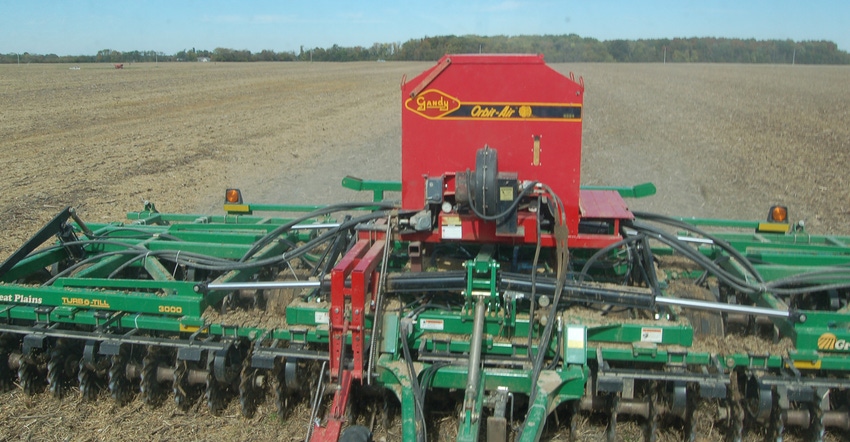
Purdue University ag economists heard a lot of talk about carbon markets earlier this year. The talk continues, but what are farmers doing about it? Based on a survey conducted over three months by the Purdue Center for Commercial Agriculture, farmers in the Midwest are watching — but few are making commitments so far.
“We included a series of questions about carbon credits and marketing as part of our Ag Barometer survey of farmers over a three-month period earlier this year,” explains Jim Mintert, director of the Purdue Center for Commercial Agriculture. “We survey 400 farmers across the country each month. They are not the same farmers each time, so over a three-month period where we included the carbon credit questions, we surveyed 1,200 farmers.”
Recently, Mintert, with Nathanael Thompson and Carson Reeling, both associate professors in ag economics at Purdue, discussed the results as part of a conversation about carbon credits and agriculture.
Drilling down on carbon data
Well over half of the respondents said they weren’t aware of potential opportunities with carbon credits, or weren’t paying attention to the discussion, Mintert says. Out of 380 who said they were following the discussion to some degree, only 85, less than 1 in 10, had talked to someone with a company offering contracts to buy carbon credits from farmers, he notes.
And of that 85 who had considered it, only 16 had signed contracts to do something different on their farm to sequester carbon in exchange for payment.
“That’s just over 1%, and it’s consistent with what we’re hearing from other sources,” Thompson says. “Only a small percentage of row crop farmers have actually signed a carbon sequestration contract so far.”
When the survey asked why farmers weren’t participating, the No. 1 reason was obvious. “Nearly two-thirds said companies weren’t offering enough payment to make it worthwhile,” Mintert says.
While contract terms and payment amounts aren’t always disclosed, the going rate currently in nonregulatory markets for sequestering carbon appears to be $10 to $20 per acre. “When you’re looking at corn yields and market prices that might gross $1,000 per acre in 2021, it’s easy to see why farmers aren’t getting too excited about an opportunity to add another $10 or $20 per acre,” Thompson says.
Other reasons to avoid carbon credits
Other reasons people in the survey gave for not participating so far relate to several of the issues that still aren’t resolved about carbon markets, Mintert says. More than a third said they were concerned about liability issues if they didn’t fulfill the contract, or if they had to break it to till and fill in ruts, for example. A healthy number, nearly a third, were just plain skeptical about the program and its sustainability.
A sizable number also said they were doing things already that might preclude them from participating. Most of the programs offered so far want people to enroll who haven’t already switched to practices that sequester carbon.
“Some of those people in this category may also have taken money to try these practices from the government, and accepting money again might be considered double dipping,” Mintert says. “Many people seem to realize these markets are in their early days, and they’re waiting to see what happens.”
About the Author(s)
You May Also Like




